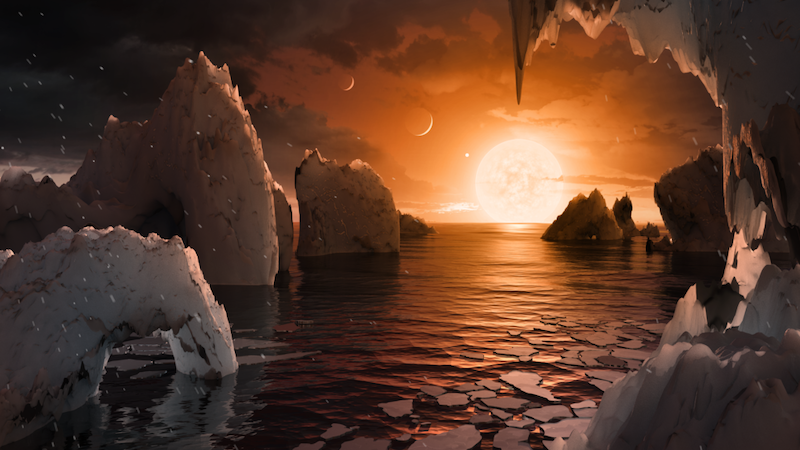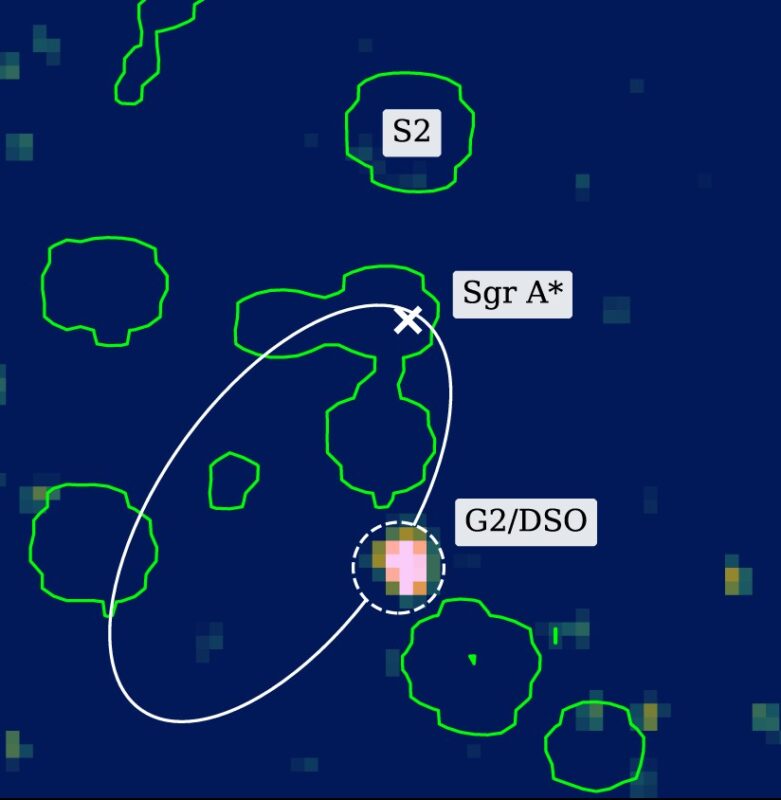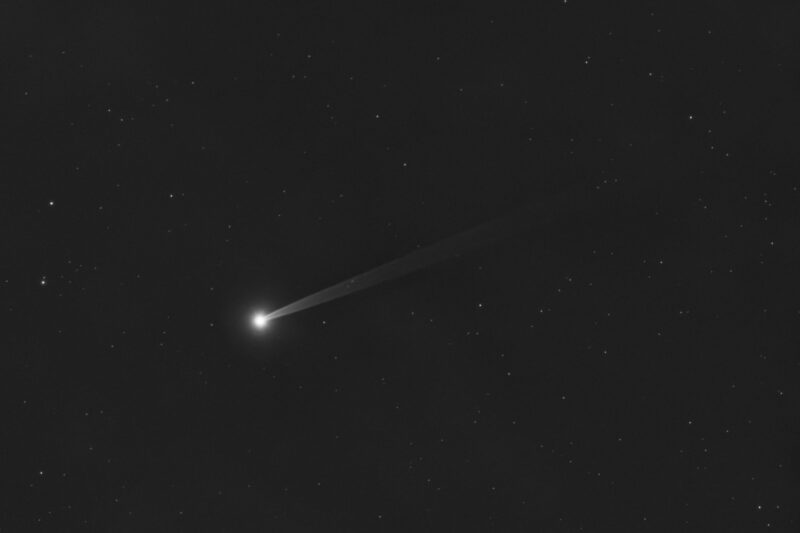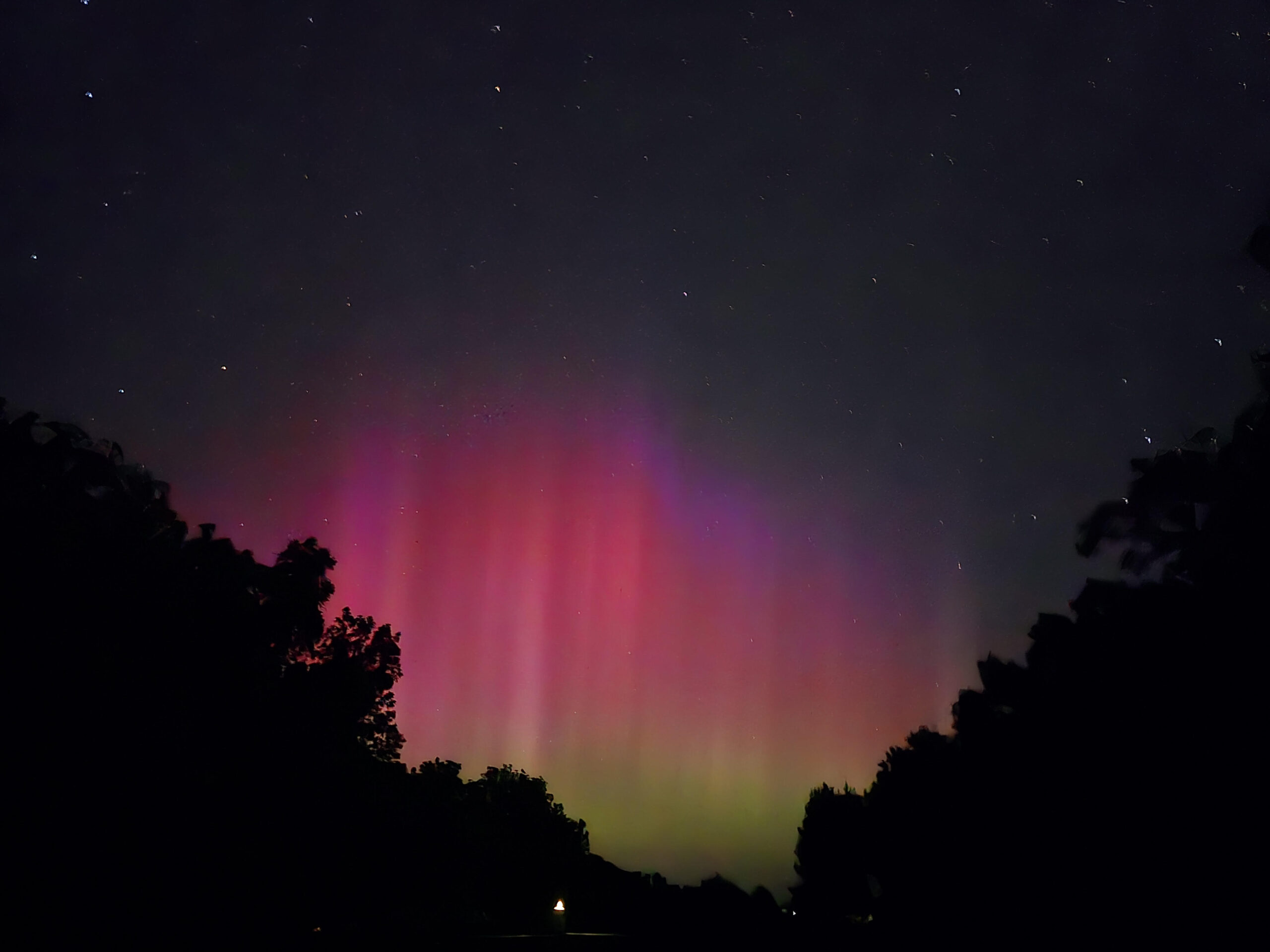Now Reading: Are the TRAPPIST-1 planets water-rich? New study says maybe
-
01
Are the TRAPPIST-1 planets water-rich? New study says maybe
Are the TRAPPIST-1 planets water-rich? New study says maybe


- The TRAPPIST-1 planetary system has seven known rocky planets. All of them are close to Earth’s size.
- Could any of them have water, and be potentially habitable? A new study says yes, although the amount of water might vary greatly among the planets.
- Volcanic outgassing is possible on the planets, but that might vary from planet to planet. Some of the planets might have greater volcanic activity than Earth, while others have less.
Do the TRAPPIST-1 planets have water?
Are any of the seven Earth-sized planets in the TRAPPIST-1 system habitable? Do they have water? We still don’t know, but a new study supports the possibility. Researchers from the University of Washington and NASA Ames Research Center in California said on May 20, 2025, that there could be abundant water on the seven worlds. The amount of water for each planet would likely depend on volcanic outgassing from below the surface. The volcanic activity might vary significantly among the planets. As a result, some of the planets could be barren, while others have oceans or even deeper global oceans (aka ocean worlds).
TRAPPIST-1 has seven known rocky planets, all similar in size to Earth. Three of them orbit within the habitable zone – where liquid water could exist on a planet’s surface – of their red dwarf star. They are about 40 light-years from Earth.
The researchers used NASA’s James Webb Space Telescope to make the new observations. Trent Thomas from the University of Washington led the new study. Matthew Williams wrote about the intriguing new results for Science Alert on May 20, 2025.
The researchers published the peer-reviewed paper in The Planetary Science Journal on May 29, 2025. A preprint is available at arXiv.
An abundance of water in the TRAPPIST-1 system?
The seven exoplanets orbit a red dwarf star, the most common type of star in the Milky Way. These stars are smaller and cooler than our sun. But planets around red dwarfs could still have water. This is especially true for planets in the habitable zone, the region around a star where temperatures could allow liquid water.
At TRAPPIST-1, three of the planets are in the habitable zone. The new study, however, shows that water might be possible on any of the planets. That water could be on the surface or below the surface, or just water vapor in the atmosphere. For atmospheric water, there would need to be a constant water source, such as volcanic outgassing.
My first article for ScienceAlert! www.sciencealert.com/trappist-1-p…
— Matthew S Williams (@houseofwilliams.bsky.social) 2025-05-21T17:49:49.288Z
Volcanic outgassing
The researchers focused on volcanic outgassing as a way to produce water on the TRAPPIST-1 planets. This is water released through volcanic activity from below the surface. The study used a theoretical outgassing model based on rocky planets in our own solar system. The researchers then compared that to current observational data of the TRAPPIST-1 system.
They found that if outgassing does occur on any of the planets, it could vary greatly. The rates could range from only 0.03 times that of Earth to as much as eight times greater than Earth. But overall, the chances are good that at least some of the planets have water, either liquid or vapor. The paper states:
We find that water outgassing rates are potentially high enough to balance water escape rates, providing a theoretical pathway for the TRAPPIST-1 planets to maintain surface water or water-vapor-containing atmospheres over long timescales.


Are the planets volcanically active?
According to the models, the rate of volcanic activity on the TRAPPIST-1 planets is likely low but could plausibly be higher. The paper says:
Our model results for magma emplacement rates also indicate that the TRAPPIST-1 planets are currently more likely to have low-to-no volcanic activity. Our results indicate that the water outgassing rates on the TRAPPIST-1 planets are more likely to be lower than Earth’s, but the plausible range also includes outgassing rates that are an order of magnitude higher than Earth’s.
The magma emplacement rate is how fast magma moves through the interior of a planet.
In addition, the mantles of the planets could be relatively dry, like Earth. Despite having surface oceans, water still only constitutes about 0.02% of the planet’s mass. On the TRAPPIST-1 planets, however, that could be as high as 1%, at the higher end of estimates. Even though that doesn’t sound like much, it’s significantly more than Earth.

Complex worlds
Overall, the results indicate that the TRAPPIST-1 planets might be quite complex with a lot of variability between them. Some might be volcanically active while others are geologically dead. Also, for example, Webb has found that TRAPPIST-1 b and c, the two planets closest to the star, have little to no atmospheres. But even they could still have water on the inside. Scientists had thought that TRAPPIST-1 c might have a carbon dioxide atmosphere, like Venus. But Webb’s findings ruled that out. However, it might still have a thinner atmosphere with water vapor, as the paper notes:
Recent JWST secondary eclipse observations of TRAPPIST-1 c rule out a thick … atmosphere but do not rule out atmospheric water vapor or its photochemical product, oxygen.
Previous studies have also suggested that the planets farther from the star could be richer in water. That could be either as liquid or perhaps ice on the outermost planets.
Other red dwarf exoplanets
The TRAPPIST-1 results could be applicable to planets orbiting other red dwarfs as well. The paper concludes:
Our model results are likely applicable to other terrestrial exoplanets with similar mass, radius and age to the TRAPPIST-1 planets. Ultimately, our results provide a theoretical model that supports the plausibility of habitable zone surface oceans and even tenuous atmospheres on M dwarf terrestrial exoplanets, despite the early super-luminous phase of their host star, and their ongoing high rates of atmospheric escape.
Webb has continued to make observations of these fascinating worlds, so it will be interesting to see what further results reveal!
Bottom line: A new study suggests the seven Earth-sized TRAPPIST-1 exoplanets could have widely varying amounts of water, ranging from very little to more than Earth.
Read more: Exoplanet TRAPPIST-1 b might have a hazy atmosphere
Read more: Are the TRAPPIST-1 exoplanets habitable, or not?
The post Are the TRAPPIST-1 planets water-rich? New study says maybe first appeared on EarthSky.
Stay Informed With the Latest & Most Important News
Previous Post
Next Post
-
 012024 in Review: Highlights from NASA in Silicon Valley
012024 in Review: Highlights from NASA in Silicon Valley -
 02Panasonic Leica Summilux DG 15mm f/1.7 ASPH review
02Panasonic Leica Summilux DG 15mm f/1.7 ASPH review -
 03How New NASA, India Earth Satellite NISAR Will See Earth
03How New NASA, India Earth Satellite NISAR Will See Earth -
 04And Thus Begins A New Year For Life On Earth
04And Thus Begins A New Year For Life On Earth -
 05Astronomy Activation Ambassadors: A New Era
05Astronomy Activation Ambassadors: A New Era -
06SpaceX launch surge helps set new global launch record in 2024
-
 07From Polymerization-Enabled Folding and Assembly to Chemical Evolution: Key Processes for Emergence of Functional Polymers in the Origin of Life
07From Polymerization-Enabled Folding and Assembly to Chemical Evolution: Key Processes for Emergence of Functional Polymers in the Origin of Life




















